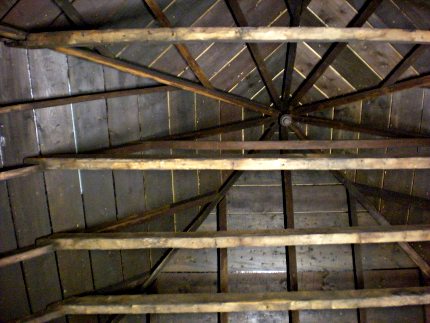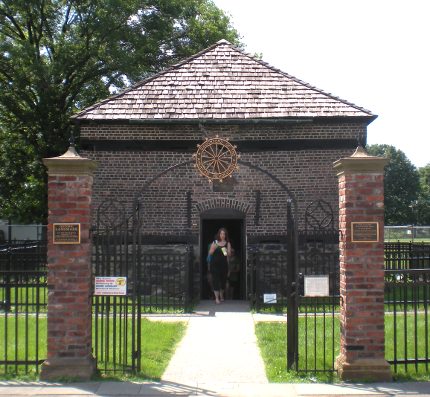
Old Colonel Bouquet was proud enough of his little blockhouse that he carved his name in the stone above the door. Or rather he had one of his minions do it, because officers don’t have to do things like that for themselves.

The rafters in the roof are almost all original. When the fort became superfluous in the late 1700s, the little building was sold off and ended up a private dwelling.

Eventually the Daughters of the American Revolution bought the place and stripped away the later accretions. Now the blockhouse looks much as it did when Col. Bouquet was in charge.
Bouquet, by the way, may have been proud enough to put his name on the blockhouse; but finding that he had the honor of naming the fort and the little trading town that instantly appeared beside it, he chose to name them both after William Pitt, prime minister at the time, who was largely credited with the British victories against France all over the world.

Leave a Reply